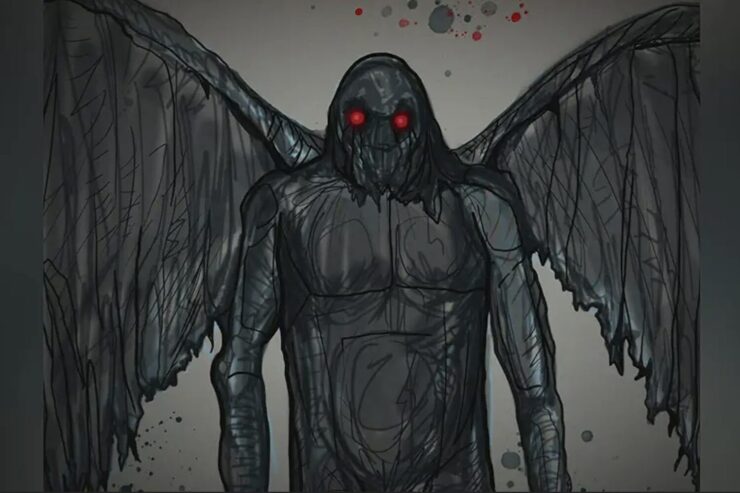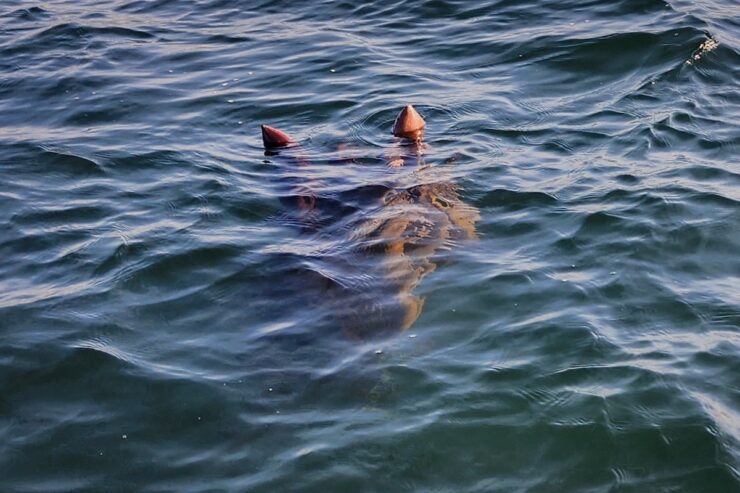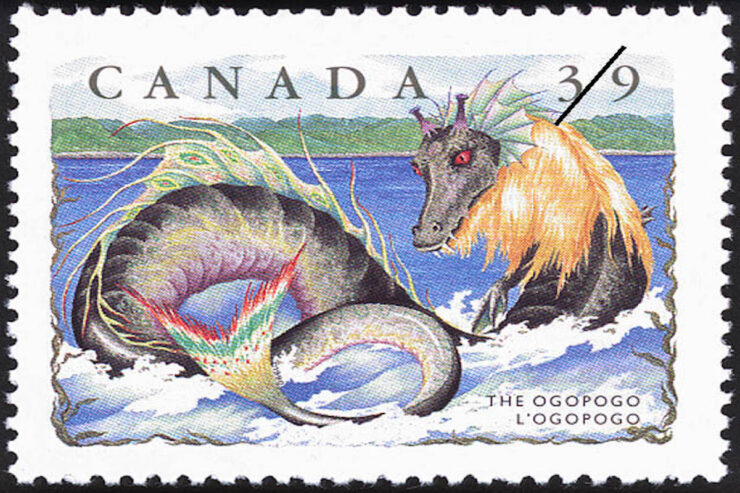I had hopes that John Keel’s The Mothman Prophecies would focus more on the cryptid than it did. Mostly, it turns out, the book is about John Keel. Like the film that’s loosely based on it (as one witty commenter on the former noted), it’s too much Man, too little Moth.
Luckily for my insatiable curiosity, paranormal TV fills the gap as ably as mass entertainment can. Any show that investigates the unexplained will tackle Mothman sooner or later, and shows about monsters and cryptids can hardly avoid it. Mothman is an icon, and nobody knows what he is or if he even exists at all.
What everyone agrees on is that in and around Point Pleasant, West Virginia, between November 1966 and the collapse of the Silver Bridge in December 1967, over a hundred people saw something. The day the bridge fell, the sightings stopped.
The thing they saw was large, winged, and distinguished by huge glowing red eyes. Bicycle reflector size, witnesses said. It mostly seemed to appear around an abandoned TNT plant on the outskirts of town. People who saw it felt overwhelming terror—but they were also seeking it out, taking joyrides out to the plant to see if they could catch a sighting.
Although Point Pleasant seems to have been the first appearance of the creature, there have supposedly been sightings since in other locations, including Chicago and La Crosse, Wisconsin. MonsterQuest’s Season 4 Episode 5 (2010) focuses on the La Crosse sighting of a huge winged creature with glowing red eyes, but also harks back to Point Pleasant. It describes a sighting in Sacramento as well, complete with video footage. The creature appears to be a harbinger of doom, though the only disaster it seems to have predicted is the Silver bridge.
MonsterQuest declares itself on the side of science. The investigators propose that the huge red-eyed monster is actually a large, predatory bird, though they don’t quite commit to whether it’s a familiar species—a barred owl, for example—or one as yet unknown to conventional zoology.
One team determines that the countryside around La Crosse might support a large winged creature, but they find no evidence of one. Another, back in Point Pleasant, demonstrates the unreliability of eyewitness reports. They set up wooden Mothman silhouettes of different sizes, complete with illuminated reflectors for eyes, and have people drive by them and then report on what size they thought the different figures were. The estimates range from a little bit off to way off, and often err on the side of too big rather than too small.
Another experiment raises more questions than it answers. A police sketch artist works with witnesses to develop images of the various sightings, from Sacramento to Point Pleasant. All of them seem to him to be quite similar. He believes they’ve been seeing the same creature. I’m inclined to wonder about cross-contamination. People hear about Mothman, see a big flying thing with red eyes, their brains process the image as the famous monster.
Monsters and Mysteries in America Season 3 (2015) devotes the whole of Episode 10 to John Keel’s theories about the events in Point Pleasant. Keel of course believes Mothman and his attendant phenomena are extradimensional beings—not extraterrestrial but ultraterrestrial. But Keel is a bit of an outlier among Mothman theorists, even though his book and the film on which it’s based actually put Mothman on the popular paranormal map.
The end of the episode takes off in a weird direction, with investigator Andy Colvin exploring the chemical plant in Point Pleasant and encountering a shimmering light show and a shadowy figure. “Andy Colvin saw only one way out—through the veil,” the narrator intones. Colvin thinks Mothman may be the Native American Thunderbird, and he’s not necessarily evil. He just is. Which is more or less what Keel concluded.
The Mothman Sightings (2020) is part of a series called In Search of Monsters. We get the whole range of history here, from ancient Sumeria—none other than Pazuzu, the winged demon of the Exorcist sequels—to Point Pleasant and beyond. This Mothman’s eyes have hypnotic powers, which ups the ante on John Keel’s descriptions of witnesses struck with abject terror.
The episode asks whether Mothman is “a campfire story that got out of control, or… is it real?”
Of course, the episode notes, it’s also possible the cryptid was a terrestrial bird, either an owl or a sandhill crane. Owls are the right shape if not the right size, as MonsterQuest observed, and their eyes glow red in the dark. Cranes are the right color and closer to the right size.
But this show is not here to stop at conventional reality. It segues to an eyewitness report that features a carload of teenagers out looking for a sighting and getting one—and the US military showing up and throwing them out of the abandoned chemical plant in Point Pleasant. It’s reminiscent of John Keel’s Men in Black warning people against talking about what they’ve seen. Clearly there’s something going on, some sort of secret government experiments. Unconventional weapons? Mutant supersoldiers? Whatever it is, the government doesn’t want us to know.
Or maybe the government has nothing to do with it. Mothman is a supernatural force, a harbinger of doom, come to warn of an impending disaster. “There is in fact a death curse that’s been associated with the Mothman in particular,” declares cryptozoologist Ken Gerhard. People who see the creature have been known to die prematurely and mysteriously (notwithstanding all the witnesses to the Point Pleasant sightings who are still alive and still telling their stories).
Case in point: a young couple who believe they’ve been stalked by Mothman for a decade, “and it’s been pretty much destroying our lives.” What they describe is a standard paranormal predicament: a haunting that’s attached itself to them, with poltergeist activity and disembodied voices uttering threats and warnings. So of course they mount an expedition to the TNT factory, because if things are already bad, why not escalate?
I watch a lot of ghosty shows. In the context of that thought-universe, if it’s a negative entity, also known as a demon, it’s going to feed on their fears. They want it to be Mothman? Then Mothman they’ll get. It doesn’t prove anything except that there’s something preying on these two people, and it’s not nice at all.
It makes dramatic television. It doesn’t add much to Mothman lore, compared to a sighting in 1952 in Braxton County, West Virginia, not terribly far from Point Pleasant. This featured a UFO and a huge figure with—yes—glowing red eyes. Was that the arrival of the Mothman? Was the Mothman an extraterrestrial?
Even John Keel admits that the Mothman sightings in Point Pleasant were accompanied by dozens of UFO sightings. Keel had less than no use for UFOs as spacecraft, but whatever they were or are, they proliferated in and around Mothman in 1966 and 1967. It’s a short step from alien spaceships to the conjecture that Mothman arrived in one.
Whether Mothman is extraterrestrial or interdimensional or straight-up demonic, it’s not restricted to Point Pleasant. Witnesses have seen it in Houston, in Cornwall in the UK, and in 2017, in Chicago. These flying humanoids seem to stake out territory in specific areas, and there may be far more than one. They’re all over the world. Whatever they are, wherever they come from, they’re as real as belief makes them.
That, really, is the essence of a cryptid. People want to believe. What they believe varies widely, but the belief is a constant. Even the debunkers can’t or won’t declare definitively that the creature does not exist—only that a particular sighting or set of sightings might be a misidentification of a much more mundane bird or animal. It still might exist. Somewhere out there. Maybe.














